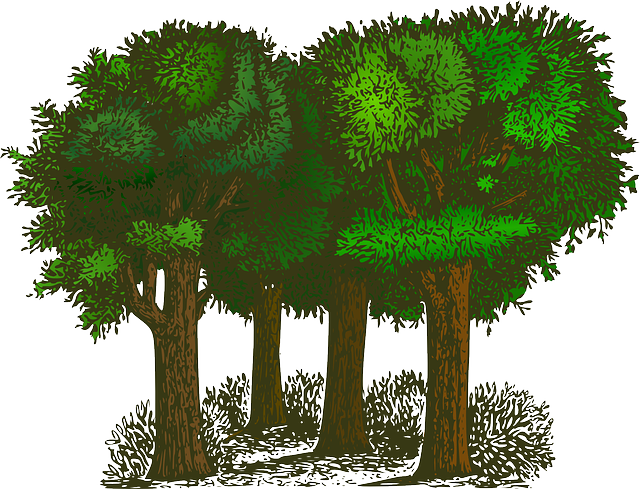Tree health assessments in Plano, Texas, are essential for maintaining and boosting property values through strategic tree care (Tree Care Plano TX). These evaluations go beyond visual checks, utilizing advanced methods to assess soil conditions, nutrients, and structural integrity. Regular assessments prevent minor issues from becoming costly repairs, while proper tree care practices promote tree flourishing and enhance the local landscape. Common urban challenges like pests, diseases, and structural problems require early detection through arborist inspections, leading to detailed reports with treatment recommendations for optimal Tree Care Plano TX. Residents can take immediate and long-term actions based on these assessments, contributing to a healthier urban forest ecosystem.
In Plano, Texas, maintaining the health of your trees is crucial for both aesthetic appeal and property value. This comprehensive guide explores tree health assessments, highlighting their importance and benefits for local properties. We’ll delve into common tree issues specific to the area, including pests, diseases, and structural problems. Additionally, we provide an in-depth look at the assessment process, tools used, and what to expect during a tree care inspection. Learn effective post-assessment care strategies and ongoing techniques to ensure optimal tree health. Discover expert tips for responsible tree management in Plano TX.
- Understanding Tree Health Assessments: The Importance and Benefits for Plano TX Properties
- Identifying Common Tree Issues in Plano TX: Pests, Diseases, and Structural Problems
- The Assessment Process: Tools, Techniques, and What to Expect During a Tree Care Inspection
- Maintaining Optimal Tree Health: Post-Assessment Care and Ongoing Strategies for Plano TX Residents
Understanding Tree Health Assessments: The Importance and Benefits for Plano TX Properties

Tree health assessments are crucial for maintaining and enhancing the beauty and value of properties in Plano, Texas. These evaluations go beyond a simple visual inspection, employing advanced techniques to gauge the physiological well-being of trees. By delving into factors like soil conditions, nutrient availability, and structural integrity, professionals can identify potential issues early on. This proactive approach is essential in the vibrant, bustling city of Plano TX, where tree care is not just an aesthetic concern but a strategic investment.
Regular assessments can help in timely intervention, preventing minor problems from escalating into major, costly repairs. Proper tree care Plano TX practices ensure that these natural elements thrive, contributing positively to the local landscape and overall property values. Moreover, understanding tree health allows homeowners and property managers to make informed decisions about planting, pruning, and maintenance, fostering a sustainable and harmonious environment for years to come.
Identifying Common Tree Issues in Plano TX: Pests, Diseases, and Structural Problems

In Plano, Texas, like many urban areas, trees face unique challenges that can impact their health and longevity. Among the most prevalent issues are pest infestations, which can range from boring insects to gnawing animals, each causing distinct damage to tree tissues. For instance, termites and beetles often burrow into trunks and branches, disrupting water and nutrient transport, while rodents like squirrels and mice may chew on bark or twigs, leading to stress and potential branch death.
Diseases are another significant concern in Tree Care Plano TX. Fungal infections, such as leaf spots and root rot, can weaken trees and make them more susceptible to other problems. Bacterial diseases, too, pose threats, resulting in wilting, canker sores on trunks or branches, and even die-back. Structural issues, like poor branch spacing, leaning trunks, or split crotches, can also compromise a tree’s stability and health. Regular assessments by arborists are crucial for early detection and effective management of these common tree problems in the Plano TX area.
The Assessment Process: Tools, Techniques, and What to Expect During a Tree Care Inspection

When assessing tree health in Plano, TX, professionals employ a range of tools and techniques to gain a comprehensive understanding of a tree’s overall condition. This meticulous process begins with a thorough visual inspection where arborists carefully examine every aspect of the tree—from the roots to the branches and trunk. They look for signs of damage, decay, pest infestation, or disease, noting any unusual growth patterns or structural weaknesses. Tools like ladders, pruning shears, and specialized cameras may be used to access hard-to-reach areas and gather detailed images or samples for further analysis.
During the inspection, tree care experts consider various factors such as species-specific needs, age, size, and the microenvironment surrounding the tree. They assess soil conditions, nearby structures, power lines, and other potential hazards that could impact the tree’s health and longevity. After collecting all necessary data, arborists provide a detailed report outlining their findings, recommendations for treatment or care, and a plan for ongoing maintenance to ensure the continued well-being of the trees in Plano, TX.
Maintaining Optimal Tree Health: Post-Assessment Care and Ongoing Strategies for Plano TX Residents

After a thorough tree health assessment, Plano TX residents can take proactive measures to maintain and enhance their trees’ well-being. Post-assessment care involves addressing immediate concerns identified during the evaluation, such as pest infestations, disease outbreaks, or structural weaknesses. Prompt action is crucial to prevent further damage and ensure the long-term vitality of the trees. This may include treatments like targeted pest control, fungicide applications, or bracing and staking for unstable limbs.
On a broader scale, Plano TX residents can implement ongoing strategies to promote tree health. Regular watering during dry periods, appropriate fertilization programs tailored to each tree species’ needs, and seasonal pruning are essential practices. Additionally, creating a buffer zone around trees by reducing competition from grasses and weeds can improve their access to nutrients and water. Incorporating these Tree Care Plano TX strategies into homeowners’ routines will contribute to a healthier urban forest ecosystem.
Tree health assessments are essential for maintaining the beauty and safety of your Plano, TX properties. By identifying potential issues early, residents can ensure their trees remain robust and vibrant. Understanding the assessment process and implementing post-care strategies, as outlined in this guide, will contribute to optimal tree care in Plano TX. Prioritizing tree health not only enhances the aesthetic appeal of your surroundings but also promotes a sustainable environment for years to come.






